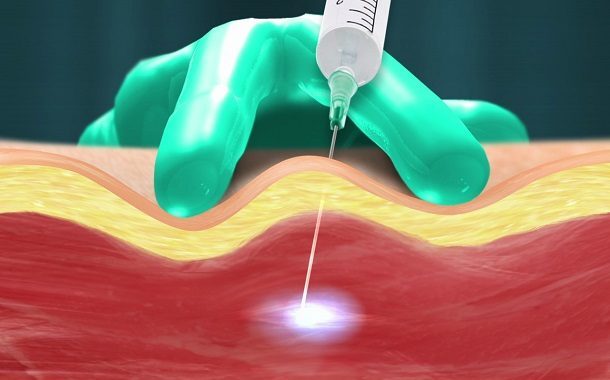Trigger Point Injection Cost
Last Updated on September 19, 2023
Written by CPA Alec Pow | Content Reviewed by ![]() CFA Alexander Popinker
CFA Alexander Popinker
Trigger points are discrete, focal, hyperirritable points with a typical location in skeletal muscle. When the muscle “harbors” a trigger point we will experience intense pain, stiffness, weakness, restricted movement, and sometimes nausea, dizziness, blurred vision, etc. These points can accumulate in a latent state throughout life, may persist for a long time after illness, but can trigger pain being activated by certain factors: direct trauma, repeated minor trauma, overuse, incorrect posture, prolonged exposure to cold, heat, stress, vitamin deficiency/excess, etc.
Trigger points are different from acupuncture points, energy points, or other esoteric concepts. Trigger points are physical phenomena that can be felt by palpation as a “muscle knot”, and the pain generated is real and persistent.
How Much Does a Trigger Point Injection Cost?
There are some factors that will affect the cost of a trigger point injection such as your geographical location, the provider you use, and the number of injections per session. In case you don’t have health insurance, you should expect to pay anywhere between $260 and $470 only for the injections, without including any extra tests that would be required.
You might also like our articles on the cost of HCG injections, allergy testing, or radiofrequency ablation.
The cost of this injection may be covered by the health insurance policies in some cases, but it is recommended to talk with your health insurance company beforehand to find know exactly what costs are covered. In case these costs are covered, no regardless of the actual policy, you will see that there is a great discount compared to the price estimates we presented above.
According to the MDsave website, the cost of a trigger point injection would be anywhere between $350 and $570 or even less, depending on the place where you are living. For example, Bellin Health System charges around $300 for a trigger point injection.
A member of the Steady Health forum said that he had to pay almost $460 for a trigger point injection.
Trigger point injection overview
A trigger point injection (TPI) is an injection that is given directly at the trigger point for pain management. The injection may be an anesthetic such as bupivacaine or lidocaine, a mixture of anesthetics, or a corticosteroid alone or mixed with lidocaine. Sometimes a single needle is inserted at the trigger point and no medicine is injected. This can be useful and is called a “dry needle”. With the injection, the trigger point becomes inactive and the pain is relieved.
Trigger injections are commonly given by rheumatologists, pain doctors, and physical and rehabilitation physicians. Some interns, general practitioners, and neurologists can perform trigger point injections.
Multiple injections are often needed for treatment, especially as patients have multiple points of pain. Up to 10 injections may be given at one trigger point, if necessary, especially for those with fibromyalgia and chronic pain.
The procedure
 The trigger point injection is performed in the office of the healthcare professional, usually with the patient lying on his stomach on the examination table.
The trigger point injection is performed in the office of the healthcare professional, usually with the patient lying on his stomach on the examination table.
The medical staff performing the procedure locates the trigger point by manual palpation and marks the place. Ultrasound guidance is generally not required. The injection site is then cleaned. Alcohol or another skin cleanser, such as betadine, is commonly used to clean the injection site. Frequently, a numbing spray such as ethyl chloride is used to anesthetize the skin and to make the actual injection less painful. The needle is then inserted at the trigger point and the drug is injected.
After injection, a simple adhesive bandage can be applied. If the area is painful after injection, ice, heat, acetaminophen, or other over-the-counter, non-steroidal, anti-inflammatory drugs such as ibuprofen or naproxen may be used.
When is it used?
Trigger point injections are used when a patient has a painful trigger point, especially when the pain radiates from the trigger point to the surrounding area. Trigger point injections can be used as a treatment for conditions such as fibromyalgia and myofascial pain syndrome. However, trigger points are frequently repeated in chronic pain syndromes.
What are the benefits of trigger point injections?
Trigger injections can help treat many different health conditions, in addition to neck and back pain, including carpal tunnel syndrome, temporomandibular joint pain, osteoarthritis, sciatica, and even sports injuries.
What can I expect from a trigger point injection?
Once you have received the trigger point injections, your doctor will probably recommend physical therapy exercises and stretching to help maximize the results of the injection and to relieve your pain and discomfort even more. It is normal to have some bruising, tenderness, aches, and pains as you heal after treatment.
Trigger point injection side effects
A potential complication of the trigger injection procedure is post-injection pain. This is relatively unusual but may still occur. This pain usually resolves on its own after a few days. It is more common when no medicine is injected at the trigger point (dry needle). Ice or over-the-counter medications, such as acetaminophen, ibuprofen, or naproxen sodium, may be helpful for post-injection pain.
Other side effects are rare with trigger point injections but can occur at any time with a needle piercing the skin and include infections and bleeds.


Leave a Reply
Want to join the discussion?Feel free to contribute!